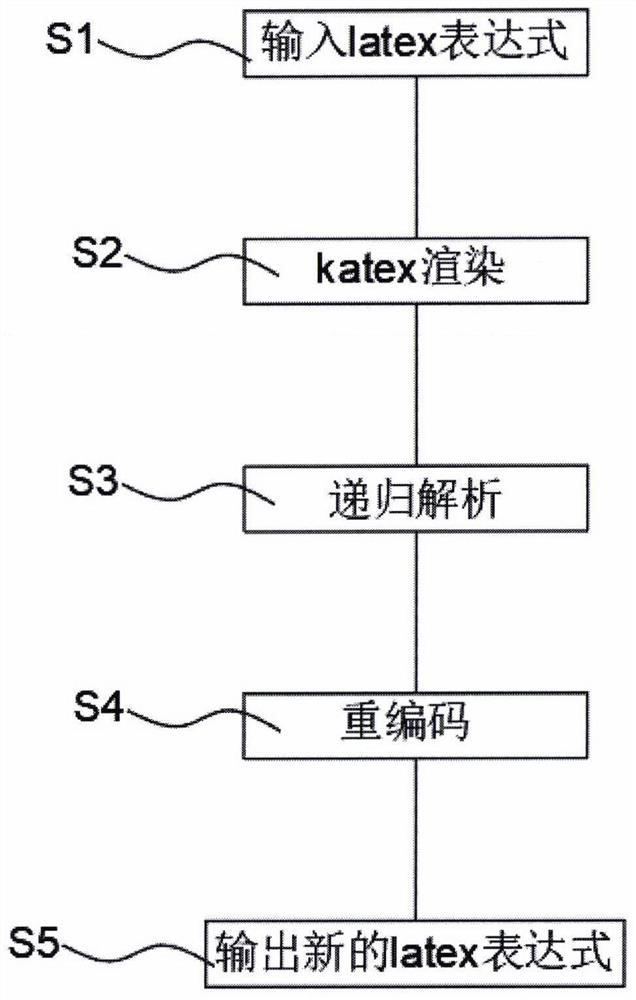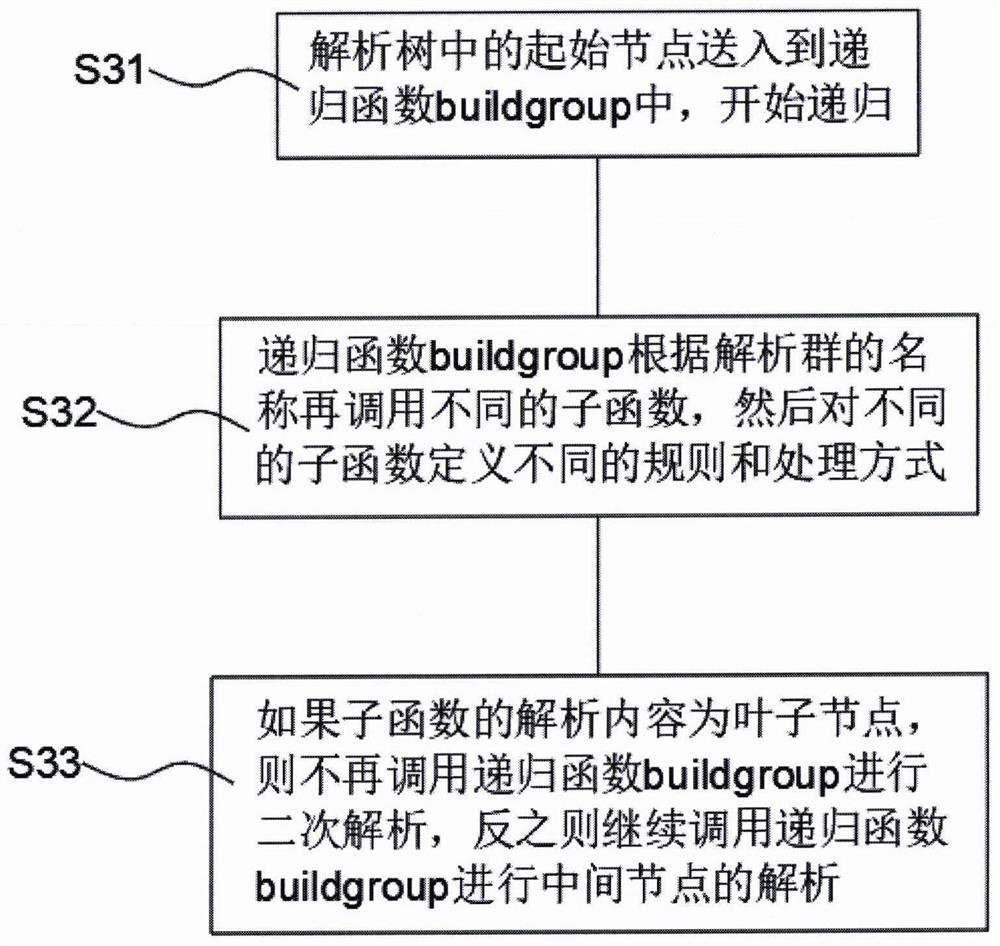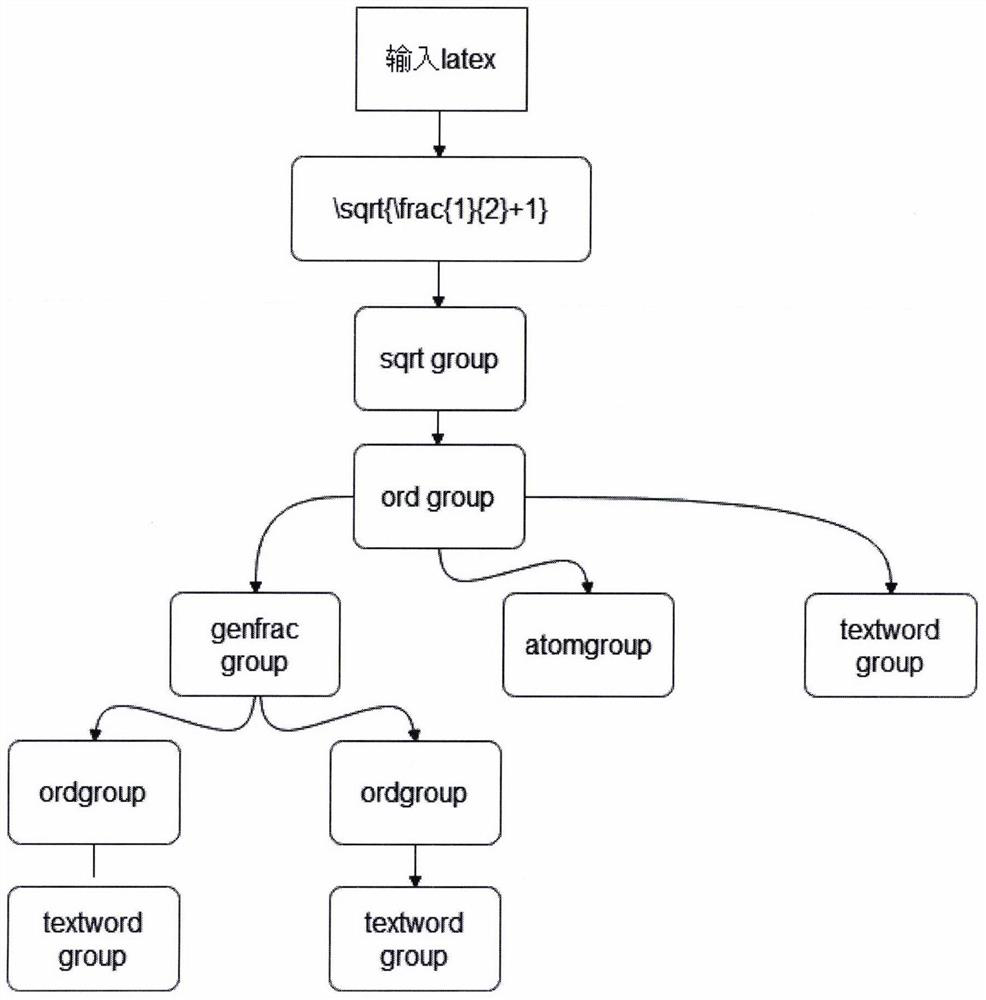Latex normalization method based on katex
A normalized and recursive technology, applied in instruments, character and pattern recognition, computer parts, etc., can solve the problems of poor model recognition rate and high latex analysis complexity, and achieve the effect of improving the recognition rate and reducing the analysis complexity.
- Summary
- Abstract
- Description
- Claims
- Application Information
AI Technical Summary
Problems solved by technology
Method used
Image
Examples
Embodiment 1
[0050] A recursive algorithm in computer science refers to a method of solving a problem by repeatedly decomposing it into subproblems of the same kind. Recursive methods can be used to solve many computer science problems, so it is a very important concept in computer science. Most programming languages support self-invocation of functions. In these languages, functions can perform recursion by calling themselves. Therefore, in many functional programming languages (such as Scheme), it is customary to use recursion to implement loops.
[0051] LaTeX is a typesetting system based on TeX, developed by American computer scientist Leslie Lambert (Leslie Lamport) in the early 1980s, using this format, even if the user has no knowledge of typesetting and programming Taking full advantage of the powerful features provided by TeX, it is possible to generate many book-quality prints in a few days, or even a few hours. The general nature of Latex allows it to be used as the output...
Embodiment 2
[0060] see figure 1 , figure 2 , image 3 and Figure 4 , a latex normalization method based on katex, which specifically includes the following steps:
[0061] S1: input latex expression;
[0062] S2: katex rendering, python calls katex through multiple threads, renders the input latex expression, obtains the intermediate result of katex rendering, and uses the intermediate result as a parse tree;
[0063] In this embodiment, the parsing tree itself contains parsing groups, and the parsing groups are specifically defined as: sqrt group: root group; ord group: common group; genfrac group: fractional group; textword group: text group; The levels of the elements in the common group are the same; the text group is composed of Chinese characters and / or numbers and / or English letters, and the text group cannot be further divided.
[0064] S3: Recursive parsing, parsing and reprocessing the parsing tree in a recursive manner, transforming the parsing results obtained by katex ...
Embodiment 3
[0090] see figure 1 , figure 2 , image 3 and Figure 4 , a latex normalization method based on katex, which specifically includes the following steps:
[0091] S1: input latex expression;
[0092] S2: katex rendering, python calls katex through multiple threads, renders the input latex expression, obtains the intermediate result of katex rendering, and uses the intermediate result as a parse tree;
[0093] In this embodiment, the parsing tree itself contains parsing groups, and the parsing groups are specifically defined as: sqrt group: root group; ord group: common group; genfrac group: fractional group; textword group: text group; The levels of the elements in the common group are the same; the text group is composed of Chinese characters and / or numbers and / or English letters, and the text group cannot be further divided.
[0094]S3: Recursive parsing, parsing and reprocessing the parsing tree in a recursive manner, transforming the parsing results obtained by katex p...
PUM
 Login to view more
Login to view more Abstract
Description
Claims
Application Information
 Login to view more
Login to view more - R&D Engineer
- R&D Manager
- IP Professional
- Industry Leading Data Capabilities
- Powerful AI technology
- Patent DNA Extraction
Browse by: Latest US Patents, China's latest patents, Technical Efficacy Thesaurus, Application Domain, Technology Topic.
© 2024 PatSnap. All rights reserved.Legal|Privacy policy|Modern Slavery Act Transparency Statement|Sitemap



